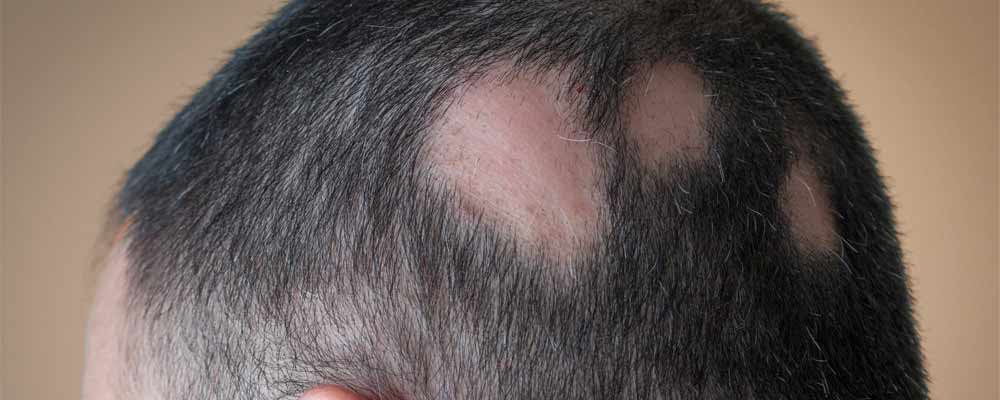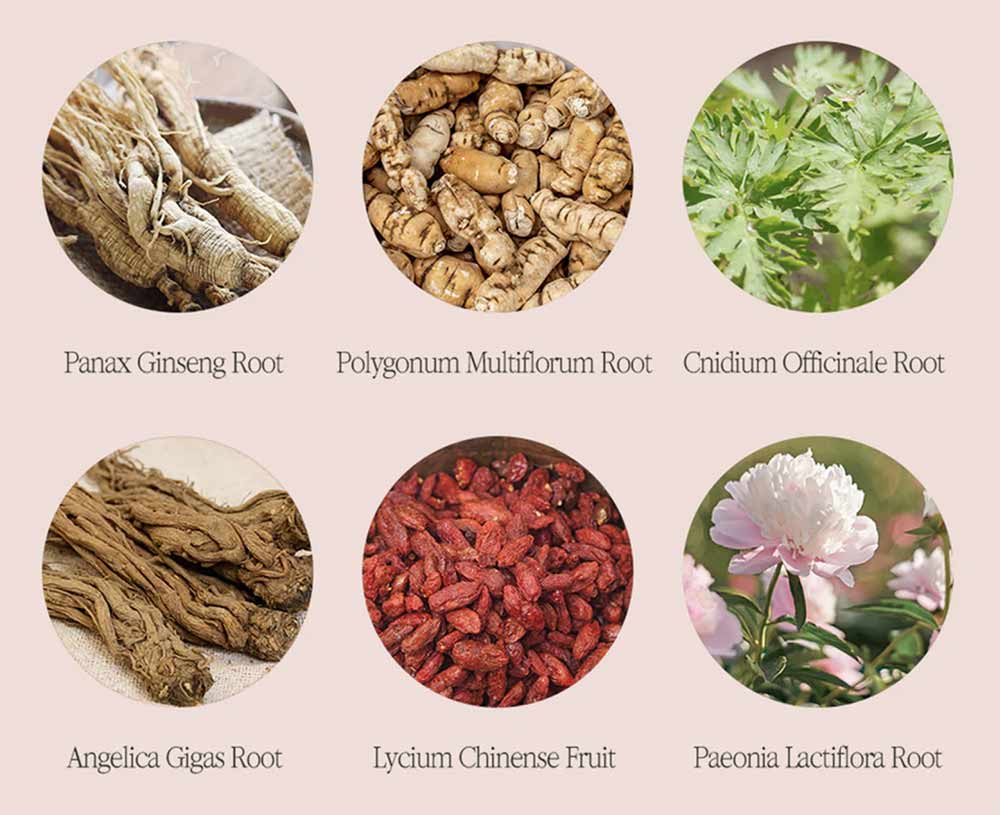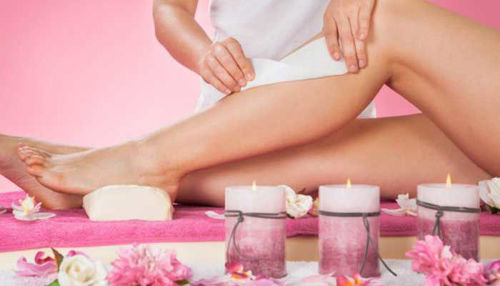Androgenic alopecia is a hereditary condition that affects both men and women. Men can start losing hair as early as their teens or early twenties, while most women don't start thinning until their forties or later. In men, the gradual lifting of the forehead and the disappearance of hair from the crown is called male pattern baldness. Female pattern baldness is characterized by a general thinning of hair throughout the scalp, most prominently on the scalp. Patchy hair loss in children and young adults, which usually starts suddenly, is called alopecia areata. It can end with complete baldness, but in more than 90% of cases, the hair grows back after a few months. In general alopecia, all hair on the body falls out. It is unlikely that they will grow back, especially if it occurs in children.
HAIR LOSS: Symptoms of hair loss | Consult with a doctor | Causes of dropout | Treatment | Conventional treatment | Alternative treatment | Prevention | Questions and Answers | Sources/references
SYMPTOMS
- In men: thinning hair on the scalp, high forehead line, horseshoe hair pattern with bare scalp.
- In women: thinning of hair in general, especially on the scalp; complete baldness is rare.
- In children or young adults: sudden loss of patches of hair; known as alopecia areata.
- Complete loss of hair all over the body; a rare disorder called alopecia areata.
- Especially in children: patches of broken hair and incomplete loss of hair, sometimes including eyebrows; the child most likely rubs or pulls his hair; the disorder is called trichotillomania.
- Excessive hair loss, but not complete baldnesst associated with various diseases or medication, rapid weight loss, anemia, stress or pregnancy; the condition is known as telogen effluvium.
CONSULT YOUR DOCTOR IF:
- you suspect that you or your child has alopecia areata or that the child has trichotillomania; both conditions should be evaluated by a doctor.
- unexplained loss of hair or hair anywhere on the body; the doctor may be looking for the disease that causes it.
Human hair varies greatly in color and strength, and we have different types of hair on our heads and bodies, depending on our gender, age, race and genetic makeup. Despite the many differences between hairs, it is normal for all of us to have hair on the back of the head and back of the neck. When hair starts to disappear there, it is alopecia or baldness.
Humans have hair all over the body, except for the palms and soles, but many hairs are so thin that you can barely see them. Hair and bristles are made of a protein called keratin, which is made by hair follicles in the outer layer of the skin. As the follicles form new hair cells, they push the old ones out through the surface of the skin at a rate of about 15 cm per year. The hair and bristles that we see are actually a set of dead keratin cells.
The average adult head has approximately 100,000 hairs, of which up to 100 fall out per day; so a few hairs falling out on the brush is not a cause for alarm. Gradual thinning of hair with age is natural and known as involutional alopecia. More and more hair follicles pass into the telogen phase, i.e. resting phase, and the rest of the hair is shorter and less numerous.
The disorder in which the patient pulls his hair is called trichotillomania; it is most often seen in children.
CAUSES

Temporary hair loss can occur in connection with high fever, severe illness, thyroid dysfunction, iron deficiency, general anesthesia, drug treatment, hormonal disorders or extreme stress and in women after childbirth. In these conditions, known collectively as telogen effluvium, many hair follicles go into a dormant phase, resulting in marked thinning of the hair. Medicines that can cause temporary hair loss are mdr. chemotherapeutic agents for the treatment of cancer, anticoagulants, retinoids for the treatment of acne and skin diseases, beta blockers for the treatment of high blood pressure and birth control pills.
Hair loss can also be caused by burns and damage to the scalp, X-ray exposure of the scalp, and exposure of the scalp to certain chemicals, pool cleaners, bleaching agents, dyes, and permanent hair curlers. In these cases, the hair begins to grow back normally once the cause is removed.
The causes of alopecia areata, a disorder that usually affects children or teenagers, are not yet clear. Most hair grows back, but it can be very thin and light at first before returning to normal thickness and color.
Washing too often, permanent curling, bleaching and dyeing hair do not cause baldness, but it canexercise to thinning hair, because it becomes weak and brittle. Tight braiding and twisting can damage and break hair, and hair clips can damage hair follicles. In most cases, hair grows back normally if the cause of its damage is removed. Severe damage to the hair or scalp sometimes leaves permanent areas of baldness.
What can cause dandruff and hair loss?

Causes that can cause dandruff and hair loss at the same time
Fungal infections: Tinea capitis, or ringworm, can cause severe itching of the scalp. Some people also notice dry flakes or blisters, and the hair may fall out in large patches.
Some other fungal infections can cause symptoms of dandruff and also cause hair loss. Antifungal medications can help treat these conditions.
Scalp Psoriasis: Psoriasis is a type of autoimmune condition that can affect the scalp and cause itchy, scaly patches. Although not dandruff, psoriasis causes dandruff-like symptoms. A person may notice bald spots, where scaly spots develop.

Folliculitis decalvans: This rare inflammatory condition destroys hair follicles. It also causes itchy red spots on the scalp. A person may think they have dandruff because of the itching this condition causes.
Lichen planopilaris: More common in women is lichen planopilaris, which causes a dry, scaly rash on the scalp. It can even cause the hair to fall out in larger patches. Treating dandruff will not cure the condition (mistreatment), but the symptoms are similar to those of dandruff.
Seborrheic dermatitis: Seborrheic dermatitis can affect any part of the body. It usually affects the scalp, where it can cause a red or grayish scaly rash that is intensely itchy, as well as oily patches. If left untreated, seborrheic dermatitis can damage the hair follicles. Aggressive scratching of the area can significantly worsen the condition.
Any condition that causes the scalp to itch or burn can cause hair loss when a person scratches their scalp. Children, in particular, may react to the unpleasant itching of the scalp by pulling their hair.
Other causes
For people with dandruff and hair loss, there is no guarantee that the two conditions are related. Some people may have dandruff, possibly due to dry skin, but also due to a condition that causes hair loss, such as:
- male pattern baldness, a hormonal type of hair loss that can develop in both men and women
- telogen effluvium, a type of hair loss caused by infection, injury or stress
- alopecia areata, an autoimmune condition
- Inflammation or scarring of the scalp
- scalp infections
THREE TYPES OF BALDNESS
Image: showing the onset of baldness in men and women

Female pattern baldness affects only a few women and usually only after menopause. The hair thins on the forehead, the shadows and the crown (3rd picture) and finally the crown can become almost completely bald (4th picture).

Alopecia areata is a sudden complete loss of hair in limited areas in otrfathers or adults of both sexes. The cause is unknown. Bald spots can appear on the scalp, eyebrows and chin and can be extensive. In most cases, hair grows back without treatment.
HEALING

CONVENTIONAL MEDICINE
Under certain circumstances, preparations containing the drug minoxidil can moderately stimulate hair growth on bald areas of the scalp. The effects are most promising in younger people who have just started to show signs of baldness or have small areas of baldness. Apply the medicine to the bald areas twice a day every day; if you stop using it, the baldness will reappear. More than 50% of users claim that the drug thickens hair and slows down hair loss. However, it is not successful in men who already have extensive male pattern baldness. Side effects are minimal, with some it can irritate the skin. It is reported that taking minoxidil affects the heart rate in a small number of patients, so patients with cardiovascular diseases should only use preparations for external use.

For certain types of hair loss, hormonal treatment can be prescribed, but not without risk. Although alopecia areata usually heals spontaneously, some doctors try to speed up the improvement with corticosteroids, which are applied to the skin or injected into the scalp. Such treatment is painful and can leave scars in the scalp due to skin atrophy. Consuming cortisol stimulates new hair growth, but the effect is usually only temporary. Prednisone, another steroid in tablet form, has been shown to be effective for patients with alopecia areata, but there are many possible side effects: weight gain, metabolic disturbances, acne, and menstrual problems. Hormonal treatment with birth control pills improves baldness due to hormonal disorders in young women.
Hair transplantation involves transferring skin grafts from areas of the scalp that contain active hair follicles to bald areas. Sometimes it is necessary to transplant hundreds of grafts to the patient - 10-60 during one procedure. Transplanted hair can fall out-
USE YOUR HEAD, KEEP YOUR HAIR
The claims that some conditioners nourish and revitalize the hair are not true. Hair - even the strongest and thickest - is dead keratin. Conditioners contain waxes that give the hair smoothness, but cannot change its actual health. So: expect clean hair and scalp from shampoo and nothing else. Brushing regularly will benefit your hair's health in the long run and save you money on expensive shampoos, conditioners, dyes and other questionable hair products.
Scalp reduction is a type of cosmetic surgery in which the scalp is reduced by pulling the hairy skin from the back and sides of the head towards the scalp. Like hair transplants, this procedure is painful and expensive, and it does nothing to slow down hereditary or age-related hair loss.
ALTERNATIVE METHODS
CHINESE MEDICINE
HERBS
Image: Plants that can help and prevent excessive hair loss.

HOMEOPATHY
MASSAGE
MEDICINE OF SPIRIT AND BODY
NUTRITION
PREVENTION
Although you cannot stop natural baldness, you can protect your hair from damage that could lead to thinning. Some people, especially women, expose their hair to harmful influences in their pursuit of beauty. Hair dryers, hot curlers, dyes, bleaches, chemical hair straightening, permanent curling, and chemical-laden cosmetics can cause hair to become dry, brittle, and sparse. People who maintain their natural hair color and shape have healthier hair. Use mild shampoos suitable for your hair. If you must curl your hair, use regular curling irons and air dry your hair whenever possible.

Regular brushing is at least as beneficial for hair condition as any cosmetic product. Choose a moderately hard brush made of natural bristles that will not tear the hair. Make long strokes from the scalp to the ends of the hair. This distributes their natural fat evenly. Start with 10 to 20 strokes a day and work up to 100. Be gentle and avoid brushing wet hair, which is especially brittle. Remember: hair is not a living tissue, so it cannot repair itself.









